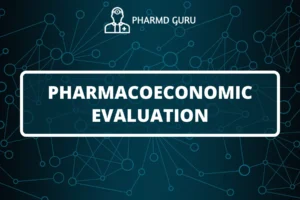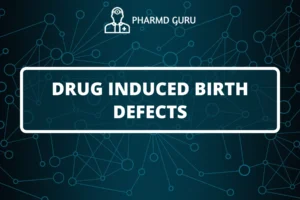PHARMACOEPIDEMIOLOGY AND RISK MANAGEMENT: Pharmacepidemiology is a specialized field that combines principles of epidemiology and pharmacology to study the use of medications in large populations. It plays a crucial role in identifying and evaluating the risks associated with medication use, as well as developing strategies for risk management. In this article, we will explore the significance of pharmacepidemiology in risk management and how it contributes to enhancing medication safety.
SCROLL DOWN TO THE BOTTOM OF THIS PAGE FOR ACTUAL NOTES.
TABLE OF CONTENTS:
- Introduction: The Intersection of Pharmacoepidemiology and Risk Management
- Role of Pharmacoepidemiology in Identifying Medication Risks
- Study Designs and Methodologies in Pharmacoepidemiology
- Pharmacovigilance: Monitoring Medication Safety
- Risk Assessment and Quantification
- Risk Communication and Education
- Pharmacoepidemiology and Regulatory Decision-Making
- Collaboration and Multidisciplinary Approach
- Challenges and Future Directions in Pharmacoepidemiology
1. Introduction: The Intersection of Pharmacoepidemiology and Risk Management
Pharmacoepidemiology and risk management are closely intertwined in the field of medication safety. Pharmacoepidemiology provides the tools and methodologies to identify, evaluate, and quantify medication risks, while risk management strategies aim to mitigate those risks and promote safe medication use. Together, they form a comprehensive approach to enhancing medication safety.
2. Role of Pharmacoepidemiology in Identifying Medication Risks
Pharmacoepidemiology plays a crucial role in identifying medication risks by examining patterns of medication use and studying their associations with adverse events. Through observational studies, clinical trials, and real-world data analysis, pharmacoepidemiologists can detect potential risks, such as adverse drug reactions, drug interactions, and long-term effects of medication use.
3. Study Designs and Methodologies in Pharmacoepidemiology
Pharmacoepidemiology employs various study designs and methodologies to investigate medication risks. These include cohort studies, case-control studies, randomized controlled trials, systematic reviews, and meta-analyses. Each design has its strengths and limitations, allowing researchers to gather evidence and draw conclusions about medication safety.
4. Pharmacovigilance: Monitoring Medication Safety
Pharmacovigilance is a key component of pharmacoepidemiology and risk management. It involves the systematic collection, analysis, and evaluation of adverse drug reactions and other medication-related events. Through pharmacovigilance programs and surveillance systems, healthcare professionals and regulatory agencies can detect and assess medication risks in real-world settings.
5. Risk Assessment and Quantification
Pharmacoepidemiology contributes to risk assessment and quantification by estimating the likelihood and magnitude of medication risks. This involves analyzing data from multiple sources, including clinical trials, post-marketing surveillance, and epidemiological studies. By quantifying the risks, healthcare providers and regulators can make informed decisions about medication use and develop appropriate risk management strategies.
6. Risk Communication and Education
Effective risk communication is crucial in ensuring that healthcare professionals and patients understand the potential risks associated with medication use. Pharmacoepidemiology helps in translating complex data and findings into understandable information that can be communicated to healthcare providers, patients, and the public. This enables informed decision-making and promotes medication safety through education and awareness.
7. Pharmacoepidemiology and Regulatory Decision-Making
Pharmacoepidemiology plays a significant role in regulatory decision-making processes. Regulatory agencies rely on pharmacoepidemiological studies to evaluate the safety and effectiveness of medications, assess benefit-risk profiles, and make informed decisions regarding approval, labeling, and post-marketing surveillance. The findings from pharmacoepidemiology studies shape regulatory policies and contribute to medication safety regulations.
8. Collaboration and Multidisciplinary Approach
Pharmacoepidemiology requires collaboration and a multidisciplinary approach. It involves the participation of epidemiologists, pharmacologists, clinicians, statisticians, regulators, and other stakeholders. This collaboration ensures that medication risks are comprehensively evaluated and managed, with input from diverse perspectives and expertise.
9. Challenges and Future Directions in Pharmacoepidemiology
Pharmacoepidemiology faces challenges such as data quality, confounding factors, and evolving medication landscape. Future directions in pharmacoepidemiology include harnessing big data and real-world evidence, advancing analytical methods, and incorporating new technologies for more precise and timely risk assessment. Ongoing research and innovation in the field will further strengthen medication safety efforts.
ACTUAL NOTES:




